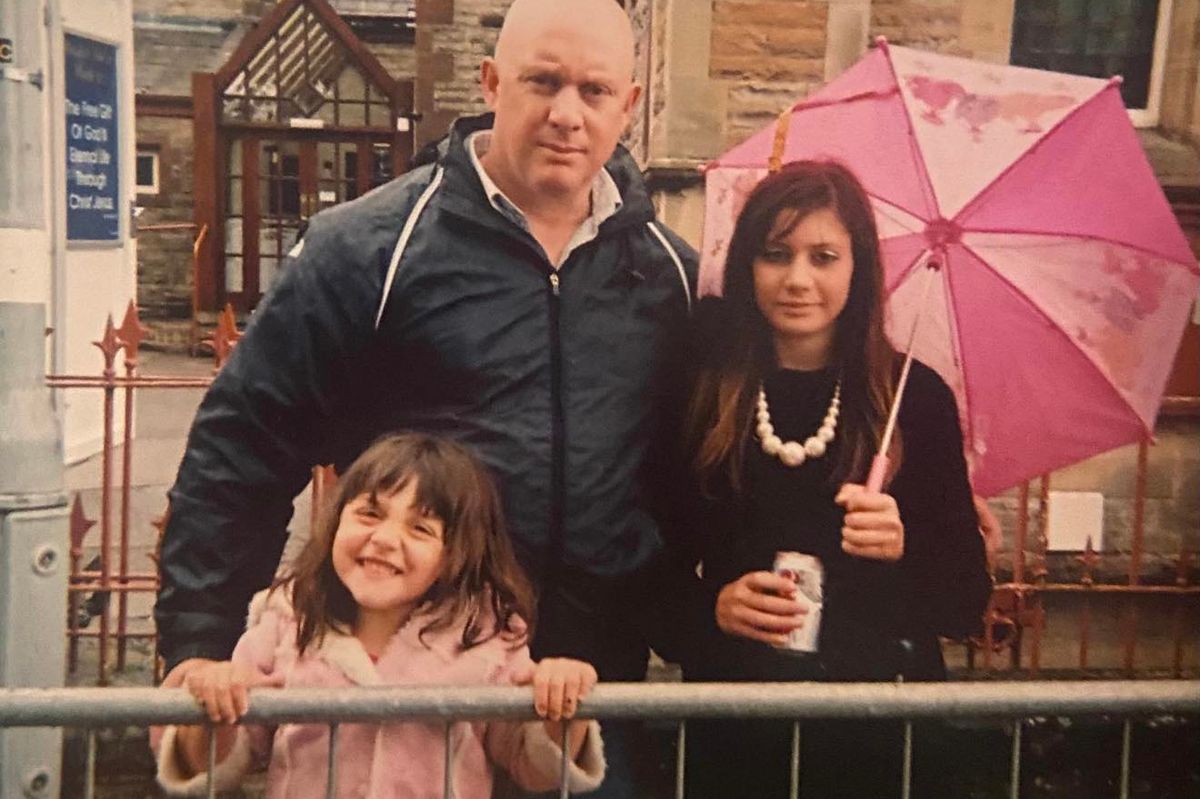Four years on from the death of her father, reality TV star Chloe Ferry has shared a touching tribute to her dad as she opened up about her pain
Chloe Ferry has paid tribute to her father four years on from his death. The Geordie Shore star’s dad passed away after losing his fight with cancer four years ago, and the reality TV favourite says she faces an ‘ongoing battle’. The MTV favourite was flooded with messages of support as she opened up on the anniversary of her father’s death on Facebook.
She posted a throwback photo of herself, her sister and father all standing outside with a pink umbrella. Chloe herself looked far from the Geordie Shore star she is today.
The post had a heartfelt message which read: “4 years ago today my dad was taken away from me.” She continued: “No matter how many years pass it doesn’t get easier! Your family miss you deeply and we would do anything to have you back I cherish all of our amazing memories and how much you used to make everyone around you laugh I love you dad Until we meet again,” signing off with a red love heart and crying emoji face.
Her parents split when she was six-years-old, with the reality star raised by her mother Liz. But she was always close with her dad and she shared a touching tribute on the day of his burial. “RIP dad you were taken from us too soon you’ll always be in my heart miss and love you always,” she captioned the post. She had shared a throwback picture of her leaning on her father’s shoulder as they both smiled for the camera. On her Instagram Stories, the reality star shared a video of herself holding a feather she found on a staircase.
She was inundated with sweet messages from fans and friends after her latest one. Co-star Marnie Simpson wrote: “Love you. Always here for you” as Sophie Kasaei added: “U got this girl.” Another told her” “Here for you Chloe, you’re not alone my darling and there are a lot of people that go through this xx”
Chloe said she “would give anything to hold” her father again and that her “whole world came crashing down” when he got diagnosed a few years earlier. She wrote: “What I would do to hold you, to tell you things I didn’t before, to have our stupid jokes. I would give everything to do that.”
Chloe had shared the news of his death, taking to her Stories to provide a short statement. “I’ve struggled to write this and still can’t accept it what I’m about to say!” Chloe began. I’m a very open person and normally happy to share all details of my life, however, this is a time where I really need to have some privacy.
“I sadly lost my dad after his battle with cancer and it still doesn’t feel real! “I am going to take a break from social media and work commitments. As a family we are all dealing with this and trying to come to terms with it… I’d really appreciate it if I was given some time to deal with it in my own way!”
In October this year, Chloe sadly admitted how much she is struggling after her dog Ivy died during the week. The star shared that she has “cried for two days”. Taking to Instagram, Chloe opened up about her grief. She started with a selfie as she woke up late and wrote over the top that she had to “try my hardest to get up and get my house sorted”.
She then filmed a teary video where she shared that her grief “comes in waves”. “I have literally cried for the last two days. Losing a pet is so hard, it’s just like a human and it [the grief] comes in waves when you least expect it.
“One day you’re alright, the next you’re not. Today I’ve just tried to get on with jobs, my house has been a mess, so I’ve tried to clean it. It has actually made us feel a little bit better but then you sit and overthink everything, and think could I have done more.”
In both the first selfie and the video, Chloe added that it was hard for her other dog, Narla, too, as she could tell something was wrong but didn’t know what. She also shared that her dog Narla was the less independent dog, and “needed” Ivy. Later in the video, the star admitted to “smelling Ivy’s blanket” and said she was having “bits of breakdowns”.
When Ivy died a few days ago, Chloe took to Instagram to share that it was the “worst night of my life”. She hopped online begged followers for advice on how to help her dog, who had been rushed to the emergency vet.
But just hours later, she had to get back on the app to tell her fans that Ivy had died. Chloe wrote: “I can’t put into words how heartbroken I am to lose my baby girl so unexpectedly.
“I’ve had the worst night of my life last night with the worst possible outcome. Losing Ivy, my first dog, who has seen me go through my worst times and always been there for me when I’ve needed her. She was the most caring loving dog and I’m absolutely devastated that she was taken from me so soon and so unexpected. RIP my girl, you will never be forgotten.”
If you have been affected by this story, Cruse Bereavement Support offers free help to make sense of how you are feeling. Click here for their website or call 0808 808 1677.
Like this story? For more of the latest showbiz news and gossip, follow Mirror Celebs on TikTok , Snapchat , Instagram , Twitter , Facebook , YouTube and Threads .




